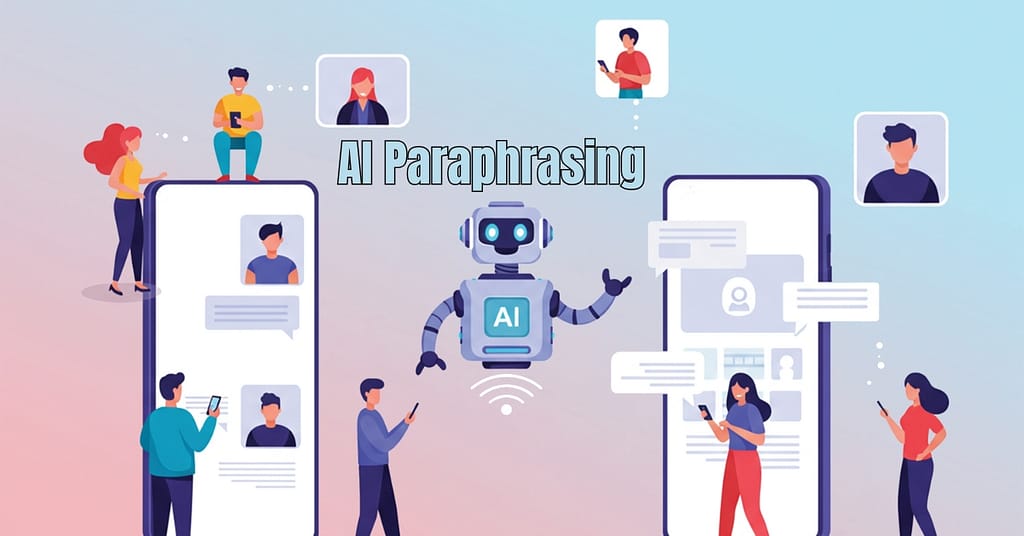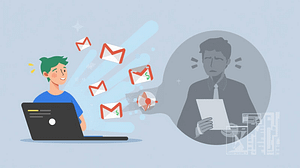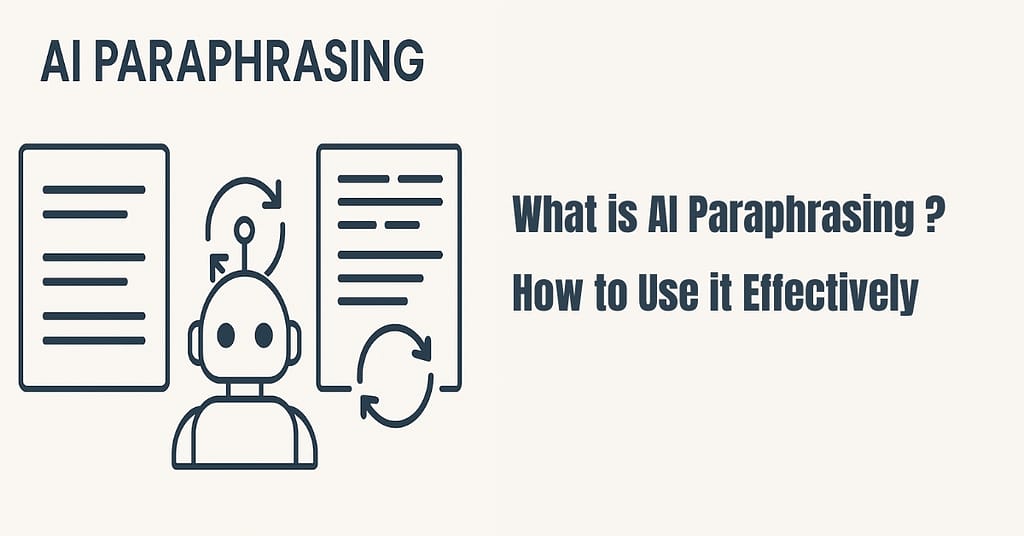AI paraphrasing tools are growing fast. The market was worth $0.15 billion in 2023 and will reach $0.4 billion by 2032. That's a huge growth of 166%. This shows how important AI paraphrasing has become for writers, students, and workers everywhere.
But what is AI paraphrasing? And why do so many people need it now?
AI paraphrasing is a smart technology that rewrites text for you. It changes the words but keeps the same meaning. Instead of spending hours rewriting by hand, AI tools can do it in seconds while making your writing clearer and better.
This guide will teach you everything about AI paraphrasing. You'll learn how these tools work, see the best ones available in 2025, and discover ways to use them that can change how you write. Whether you're a student trying to avoid copying, a marketer making different content versions, or someone who wants to write better, this guide has what you need.
You Could Enjoy the Deep dive Audio Podcast below, but I will recommend you to go through whole Blog Post to Understand the context better.
What is Paraphrasing? Learning the Basics
Paraphrasing means saying the same thing in different words. You take someone’s idea and write it your way while keeping the original meaning. It’s like translating from English to English – the message stays the same, but the words change.
People have been paraphrasing for hundreds of years. It helps us:
- Make hard ideas easier to understand
- Avoid saying the same thing over and over
- Share information in our own style
- Help different people understand better
Old Way vs. AI Way of Paraphrasing
The old way of paraphrasing takes a lot of work. You need to:
- Read and understand the original text completely
- Find the main ideas and how they connect
- Write new sentences with different words
- Make sure facts stay correct
- Check that it sounds natural
AI paraphrasing does this automatically using smart computer programs. Modern AI can read text, understand what it means, and create new versions in seconds instead of hours.
What Makes Good Paraphrasing
Whether you do it by hand or use AI, good paraphrasing has these features:
Same meaning: The main message doesn’t change even with different words.
Different structure: The sentences are built differently from the original.
New words: Uses synonyms and other ways to say things without losing the point.
Smooth reading: The new text flows well and makes sense.Proper credit: You still need to say where the original idea came from.
What is AI Paraphrasing? Smart Text Rewriting
AI paraphrasing uses computer programs to automatically rewrite text while keeping the same meaning. These systems use smart technology to read, understand, and recreate content in new ways.
How AI Paraphrasing Works
When you put text into an AI paraphrasing tool, here’s what happens:
Reading the text: The AI breaks your words into small pieces called tokens. These are individual words and punctuation marks that help the computer understand your text structure.
Understanding meaning: Smart programs look at how words relate to each other, find grammar patterns, and figure out what the whole text means.
Finding patterns: The AI compares your text to millions of examples it learned from to find the best ways to rewrite it.
Making new content: The system creates different versions using new words, sentence styles, and ways of writing while keeping your original meaning.
Checking quality: Built-in checkers make sure the new text makes sense, is accurate, and reads well before showing you the result.
The Technology Behind AI Paraphrasing
Modern AI paraphrasing tools use the same type of technology as ChatGPT and other smart AI systems. These programs use special methods to understand context across whole documents, not just single sentences.
Natural Language Processing (NLP) helps AI understand human language, including:
- How words relate to each other
- Grammar rules and sentence structure
- Meaning that changes based on other nearby words
- Common phrases and expressions
Machine Learning makes the AI better over time by:
- Learning from user feedback and fixes
- Finding successful rewriting patterns
- Getting used to different writing styles
- Improving various quality measures
Types of AI Paraphrasing Methods
AI paraphrasing uses two main approaches:
Copy and Rearrange Method takes existing words and phrases from your original text and puts them in new orders. This approach:
- Keeps high accuracy by using your original words
- Works well for technical or special content
- Gives reliable results with less risk of changing meaning
- Is great at keeping facts and specific details correct
Create New Method makes completely new text based on understanding your original content. This method:
- Creates more natural-sounding alternatives
- Offers more style choices
- Can make complex ideas simpler for different readers
- Produces more creative and varied results
The best AI paraphrasing tools use both methods, picking the right one based on what type of content you have and what you need.
Why Use AI Paraphrasing? Great Benefits for Everyone
AI paraphrasing tools have become must-have tools for writers, students, and workers who need to rewrite content while keeping the original meaning. The benefits go way beyond just saving time.

Save Time and Get More Done
Manual paraphrasing can take hours for long documents. Professional writers often spend 15-20 minutes making just one paragraph perfect. AI paraphrasing tools cut this time to seconds, which lets you:
- Quickly create different versions for testing
- Fast changes of content for different websites
- Instant creation of multiple versions to compare
- Smoother editing and revision work
Better Consistency and Quality
AI systems keep the same quality standards for all results. Unlike human writers who get tired or have mood changes, AI paraphrasing gives you:
Same tone and style throughout long documents Consistent word use across related content
Reliable quality measures for how easy it is to read Standard formatting and structure approaches
More Creativity and New Ideas
AI paraphrasing tools help spark creativity by suggesting different ways to say things that writers might not think of. They help beat writer’s block by:
- Giving fresh views on familiar ideas
- Suggesting unexpected word combinations
- Offering multiple style approaches to the same idea
- Inspiring new directions for content development
Easy Access and Language Help
Modern AI paraphraging tools make quality writing available to everyone by providing professional-level rewriting to:
- People who don’t speak English as their first language
- Students learning how to write for school
- Small businesses without dedicated writing teams
- Content creators working in multiple languages
Best AI Paraphrasing Tools in 2025: Simple Reviews
The AI paraphrasing market has many options, each with special strengths. Below are the Best AI Paraphrasing tool.
Top Professional Tools
QuillBot is the market leader with lots of features:
- Multiple rewriting styles (Standard, Fluency, Creative, Formal, Shorten, Expand)
- Works with Google Docs, Microsoft Word, and Chrome
- Grammar checking and citation help
- Free version with paid upgrades available
Jasper AI is great for marketing and business content:
- Keeps your brand voice consistent in all results
- Templates for specific industries
- Advanced tone adjustment features
- Enterprise-level security and team features
Grammarly combines paraphrasing with complete writing help:
- Real-time suggestions while you write
- Smart recommendations based on context
- Plagiarism detection included
- Professional communication improvements
Special Purpose Tools
WordAi focuses on SEO and content marketing:
- Can rewrite many articles at once
- Creates SEO-friendly results
- API access for automated workflows
- Advanced spam filter avoidance
Hypotenuse AI targets online stores and product descriptions:
- Product-specific rewriting templates
- Bulk processing for catalog content
- Multiple language support for global markets
- Works with e-commerce platforms
Free and Cheap Options
Paraphraser.io offers good free features:
- No sign-up needed for basic features
- Multiple rewriting styles available
- Simple, easy-to-use interface
- Good enough for occasional personal use
SpinBot provides basic paraphrasing:
- Completely free with no limits
- Instant processing for short texts
- Simple copy-paste interface
- Best for simple rewording tasks
How to Choose the Right Tool
Think about these factors when picking an AI paraphrasing tool:
How much content: High-volume users need bulk processing and API access.
Quality needs: Professional content needs advanced models with smart understanding.
Integration wants: Look for tools that work with your current writing workflow and software.
Budget limits: Balance what features you need with how much you can spend on subscriptions.
Special features: Consider specific needs like SEO optimization or academic citation formats.
How People Use AI Paraphrasing Tools
School Work and Research
Students and researchers use AI paraphrasing to:
Avoid copying while using source material in their work. The key is understanding that paraphrasing doesn’t mean you don’t need to cite sources – it just lets you present ideas in your own voice.
Make writing clearer by offering different ways to express complex ideas. Academic writing often gets better with multiple tries to achieve the perfect balance of accuracy and clarity.
Create multiple drafts for comparison and selection. This approach helps find the most effective way to share research findings.
Help with language barriers for international students writing in English as a second language. AI paraphrasing can help improve grammar and style while keeping intended meaning.
Content Marketing and SEO
Digital marketers use AI paraphrasing for:
Content variety across multiple channels. The same core message can be adapted for social media, email campaigns, blog posts, and video scripts without looking repetitive.
SEO improvement through natural keyword integration. AI tools can add target keywords while keeping readability and avoiding keyword stuffing penalties.
A/B testing of different messaging approaches. Multiple versions of the same content enable data-driven decisions about which works best with audiences.
Location support for global campaigns. AI paraphrasing helps adapt content for different cultural contexts while keeping brand consistency.
Business Communication
Business professionals use AI paraphrasing to:
Improve email communication by offering formal and informal alternatives for different recipients and situations.
Better presentation materials through clearer, more engaging language that connects with diverse audiences.
Streamline report writing by providing alternative ways to present findings and recommendations.
Help cross-department communication by adapting technical content for non-technical people.
Creative Writing and Content Creation
Writers and content creators use AI paraphrasing for:
Beating writer’s block through alternative phrasings that spark new creative directions.
Style experiments by exploring different voices and tones for the same content.
Content reuse across different formats and platforms while keeping core messaging.
Team writing by providing starting points and alternatives for group-based content development.
Problems and Things to Watch Out For
Despite impressive abilities, AI paraphrasing tools have important limits that users must understand.
Context and Detail Challenges
AI systems sometimes struggle with:
Cultural context that affects how meaning is understood Emotional undertones that influence how messages are received Industry-specific terms that need specialized knowledge Funny or sarcastic content that depends on subtle cues
Quality Control Needs
Effective AI paraphrasing needs human checking to ensure:
Facts stay accurate throughout the rewriting process Logical flow connects ideas well across paragraphs Right tone matches the intended audience and purpose Brand consistency aligns with established voice and messaging guidelines
Right Way to Use It
Responsible AI paraphrasing involves:
Proper credit when using others’ ideas, no matter how they’re expressed Being honest about AI help in professional and academic contexts Quality checking to ensure output meets standards and expectations Respect for intellectual property and copyright considerations
How to Use AI Paraphrasing the Right Way
Getting Ready
Clean your original text by removing formatting problems, fixing obvious errors, and ensuring clarity before paraphrasing.
Define your goals clearly – are you making complex text simpler, changing tone, or creating variations for different audiences?
Choose right tools based on your specific needs, content type, and quality requirements.
During the Paraphrasing Process
Use multiple tries to explore different approaches and find the most effective version.
Try different settings like formality levels, creativity modes, and length adjustments to get the best results.
Compare alternatives side-by-side to identify the version that best meets your goals.
After Paraphrasing Quality Control
Read outputs carefully to ensure meaning stays the same and flow is natural.
Fact-check technical information and verify that specialized terms remain accurate.
Test with target audiences to confirm that paraphrased content achieves intended communication goals.
Blend smoothly with surrounding content to maintain consistency throughout larger documents.
Future of AI Paraphrasing: What’s Coming Next
The AI paraphrasing world continues changing rapidly, with several key trends shaping its future:
Better Understanding
Next-generation AI paraphrasing tools will offer:
Whole document awareness that keeps consistency across entire pieces rather than treating sentences alone.
Multi-media integration that considers images, charts, and other media when paraphrasing surrounding text.
Field expertise that understands specialized areas like medicine, law, and engineering with greater precision.
Personal and Adaptive Learning
Future systems will provide:
Individual writing style adaptation that learns and copies personal voice and preferences.
Dynamic quality adjustment based on feedback and usage patterns to continuously improve results.
Context-aware suggestions that consider your specific industry, audience, and communication goals.
Integration and Automation
Emerging capabilities include:
Real-time team features that enable group-based paraphrasing and editing workflows.
API-first designs that work seamlessly with existing content management and writing tools.
Automated quality checking that flags potential issues and suggests improvements without human intervention.
Using AI Paraphrasing for Better Communication
AI paraphrasing represents more than just a technology improvement – it’s a basic shift in how we approach written communication. Paraphrasing is a valuable skill with many benefits that helps you understand complex ideas, improve your writing style, and show ethical information use.
The technology has grown to the point where it delivers reliable, high-quality results across diverse uses. From students improving their academic writing to marketers creating compelling campaigns, AI paraphrasing tools provide accessible solutions for common communication challenges.
Success with AI paraphrasing comes from understanding both what it can and cannot do. These tools are great at creating alternatives, improving clarity, and saving time – but they work best when combined with human judgment and checking.
How AI Actually Answers Your Questions: A Simple Guide
The future promises even smarter capabilities as AI systems develop better understanding and personal features. Early users who master these tools now will be best positioned to use advancing capabilities as they emerge.
Your next step is trying different AI paraphrasing tools to find those that best match your specific needs and workflow. Start with free options to understand the basics, then consider premium features as your requirements become more advanced.
The question isn’t whether AI paraphrasing will change how we write – it already has. The question is how quickly you’ll adapt these powerful tools to enhance your own communication effectiveness.
FAQs
1. What is the difference between AI paraphrasing and copying?
AI paraphrasing rewrites text in different words while keeping the original meaning, but it doesn’t remove the need for proper citation. Copying involves using someone’s ideas without giving credit, no matter if the words are changed. Always cite sources properly, even when using paraphrased content.
2. Can AI paraphrasing tools tell if text was already paraphrased?
Most AI paraphrasing tools cannot tell if input text was previously paraphrased. They treat all input as original content and try to rewrite it further. However, multiple rounds of AI paraphrasing can sometimes result in worse quality or changed meaning.
3. How accurate are AI paraphrasing tools compared to human paraphrasing?
AI paraphrasing tools achieve high accuracy for simple content but may struggle with detailed, creative, or highly technical material. Human paraphrasing generally provides better context understanding and cultural sensitivity, while AI offers speed and consistency advantages.
4. Are there any free AI paraphrasing tools that work well?
Yes, several free tools provide good basic features, including QuillBot’s free version, Paraphraser.io, and SpinBot. However, free versions typically have limits on text length, processing speed, or advanced features compared to paid alternatives.
5. Can AI paraphrasing help with SEO content creation?
AI paraphrasing can support SEO by creating content variations, avoiding duplicate content problems, and helping add keywords naturally. However, it should be combined with SEO best practices and human checking to ensure content quality and search engine compliance.
6. What languages do AI paraphrasing tools support?
Language support varies by tool. Most major platforms support English well, with growing support for Spanish, French, German, and other major languages. Some specialized tools focus on specific language pairs or multilingual content adaptation.
7. How do I choose the best AI paraphrasing tool for my needs?
Consider your content volume, quality requirements, budget, and integration needs. Test free versions of several tools with your typical content to compare results. For professional use, focus on tools with advanced features, reliable support, and appropriate security measures.
8. Can AI paraphrasing change the tone or style of content?
Yes, many advanced AI paraphrasing tools offer tone and style adjustment options. You can typically choose between formal/informal, creative/conservative, and other style variations to match your intended audience and communication goals.
9. Is it right to use AI paraphrasing for school work?
Right AI paraphrasing use in school requires honesty and proper citation. Check your school’s policies about AI help, always cite original sources, and use AI tools to improve rather than replace your own understanding and analysis.
10. How can I ensure quality when using AI paraphrasing tools?
Always review and edit AI-generated content before use. Check factual accuracy, look for logical flow, ensure appropriate tone, and test readability with your target audience. Consider AI paraphrasing as a starting point rather than a final solution.







